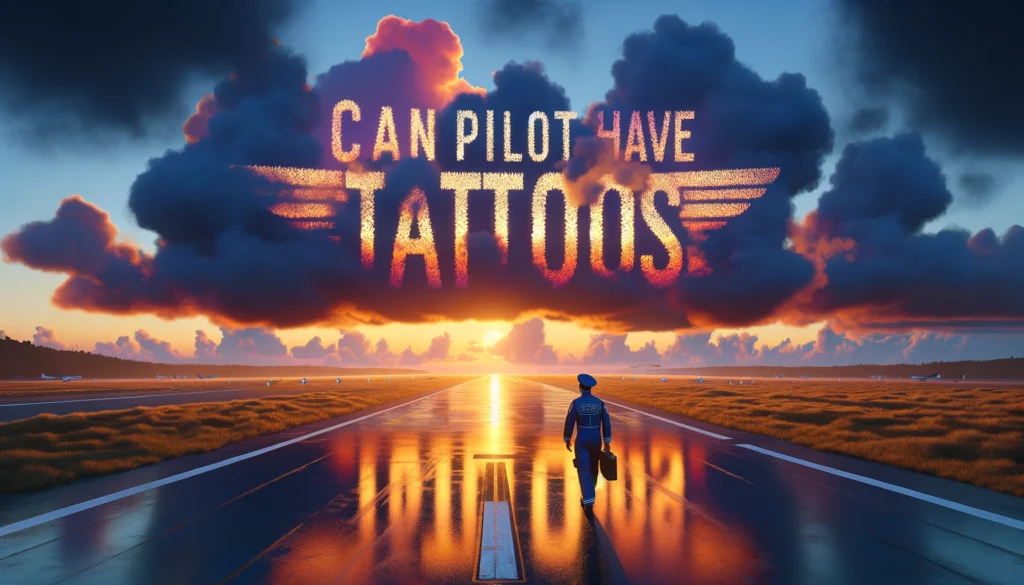The aviation industry & Free Sky acts as a magnet for many people. As a pilot, you can witness a majestic sunset from a thousand feet above altitude, & it’s considered the most memorable experience the aviation industry provides to any Pilot. However, every day spent in the Sky by a pilot is full of rules, regulations, and proper procedures to offer a safer and more convenient flight experience for their passengers. Besides all this there is a question every pilot or future pilot mind, Can Pilots Have Tattoos? & what are the Aviation & FAA rules.
In the U.S., Tattoos are a standard part of our lifestyle; every second person gets a tattoo on their body, so when one with a tattoo wants to be a pilot, this raises the question of whether a pilot can have Tattoos or not.
This guide will take you through the cloudy journey of Airline Policies and cultural nuances, giving you a safe passage that any pilot or aspiring cabin crew member can follow.
Understanding Aviation Policies For Tattoos:
Airlines across the globe have their different declarations regarding tattoo policies. While some remain steeped in tradition, forbidding tattoos under company uniform, others have taken a more modern stance, focusing on the visibility and coverage of tattoos.
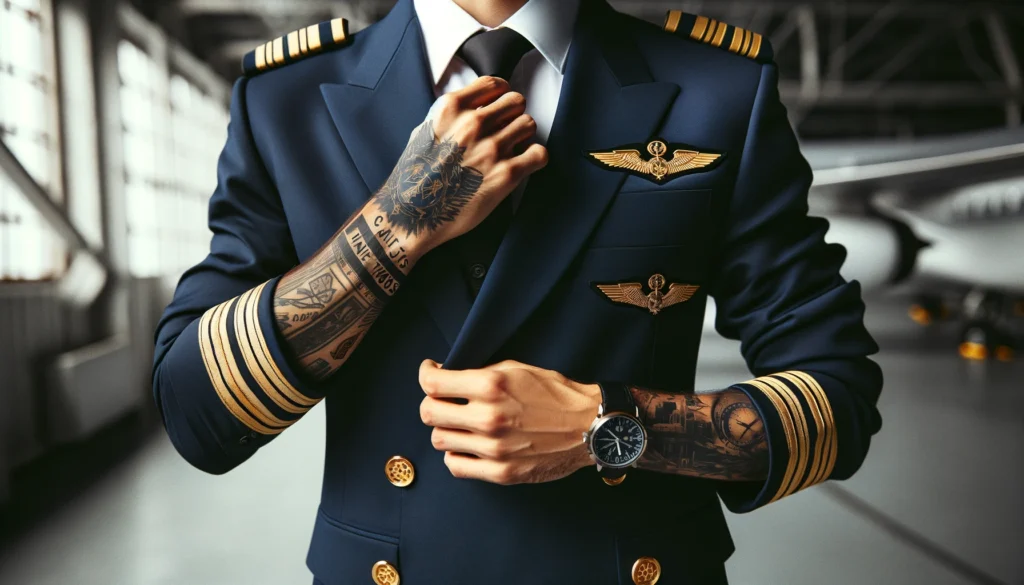
Can Pilots Have Tattoos: Key Points to Consider
- Airline Policies Vary: Airlines often have various policies depending on the tattoo’s visibility and the subtlety of its content.
- Location and Visibility: Most airlines said the tattoos should be kept under the pilot uniform. Tattoos on visible sites like the face, neck, hands, or sometimes arms are generally not allowed by many airlines.
- Cultural Shifts: A shift towards acceptance is experienced mainly by the society where society has no issue with it, like in the US. However, professionalism remains paramount.
- FAA Guidelines: The Federal Aviation Administration (FAA) has no direct issue with Tattoos, but it shouldn’t point to the safety and effectiveness of flight operations.
- Global Perspective: The ‘Policies’ can vary significantly between different nations, reflecting the basic cultural perspectives of nations around the globe towards tattooing.
FAA’s Stance on Tattoos:
The FAA still needs to provide a clear-cut rule concerning tattoos among pilots. Mainly, they focus on the factors that relate to the pilot’s performance of duties in a safe way. However, pilots, during medical certification, should hide tattoos if that has any connection to the pilot’s medical condition or have any health problems due to it.
Considerable Points of FAA’s Policy on Pilot Tattoos:
- No Direct Restrictions: The FAA does not have any explicit regulations prohibiting pilots from having tattoos. This entails that tattooing does not serve as a basis for preventing individuals from attaining a pilot’s certificate or pursuing an aviation career.
- Visibility and Professionalism: While the FAA does not impose strict rules on tattoos, individual airlines can have their own dress codes and presentation standards. Quite a few airlines demand that pilots not display tattoos, while they are in the uniform. It often means tattoos on the face, neck, hands, or areas where uniforms cannot cover are almost forbidden.
- Safety First: The FAA will not permit anything on the pilot’s body that might interfere with the aircraft’s operation or flight safety, like tattoos. While the FAA, as a rule, does not directly prohibit such tattoos, by the industry’s standards and public expectations, they are considered distracting and inappropriate.
- Considerations for Medical Certification: Pilots must obtain medical clearance regularly to fly. Tattoos, however, do not influence one’s medical fitness. Yet, Aviation Medical Examiners (AMEs) would need to know if a tattoo covers a medical condition that an AME has to evaluate.
Airline’s Stance on Can Pilots Have Tattoos or Not:
A glance at individual airline policies reveals a broad scope of perspectives. If we talk about Delta Air Lines‘ no-nonsense approach that extends to any no tattoo should be visible in uniform, to the tattoo-welcoming approach of Air New Zealand, where tattoos are welcome if they don’t steal the spotlight, the range is vast. This diversity reflects the global tapestry of air travel and the seismic shifts in societal attitudes.
Top Airline Policies for Tattoos
| Airline | Policy Regarding Tattoos |
| Delta Air Lines | No visible tattoos are allowed on flights. No issue with the covered one, |
| United Airlines | Strictly prohibits visible tattoos |
| Virgin Atlantic | Permits to have tattoos, but they should not be visible and offensive. |
| Air New Zealand | Allows visible tattoos that are not offensive or inappropriate. |
| Emirates | No visible tattoos are allowed while in uniform. |
| Southwest Airlines | Tattoos must be covered at all times while on duty. |
| British Airways | No visible tattoos are allowed while wearing the company uniform. |
| Qatar | Allowed, but Tattoos must not be visible on the face, neck, or hands. |
Other Considering Body Modifications: Beyond Tattoos
The discussion of body modifications in the cockpit surpasses tattoos, there’s more other stuff that a pilot wants to wear, but what about restriction.!!
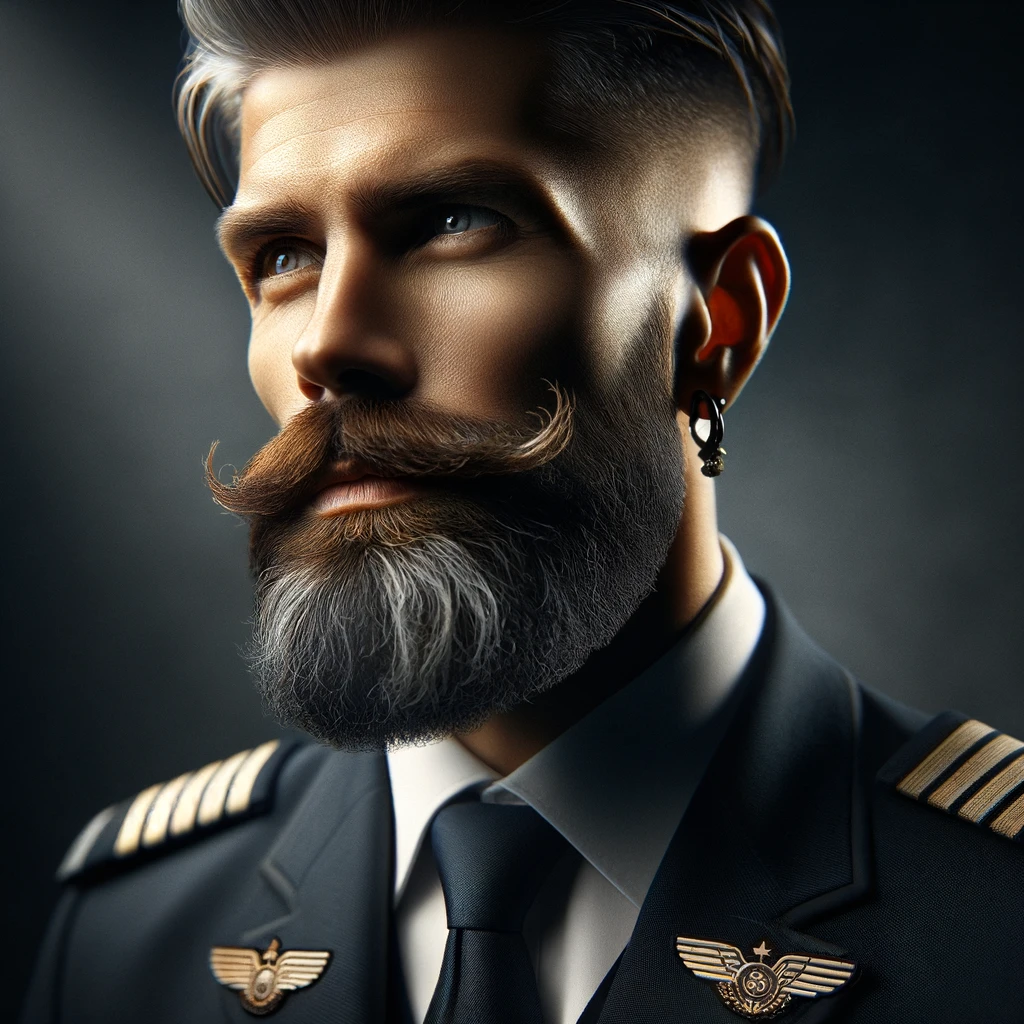
Piercings: Navigating the Boundaries
- Ear Piercings: Thinking of having an ear piercing or wearing Earrings that are small and unobtrusive is usually acceptable as long as they do not interfere with the use of headsets or safety equipment.
- Facial Piercings: Most airlines would set strict boundaries for facial piercings, asking them to get them removed or cover them before the flight operations start. This policy maintains a uniform and professional look among crew members.
Facial Hair: Balancing Beautiful and Safety
- Beards: Airline companies allow beards, but beards should not become the reason for the integrity of safety equipment like oxygen masks. The beard should be neatly trimmed and it should be acceptable to have a sufficient length.
- Mustaches: In most instances, the airline allows this, provided that the mustache is maintained professionally and in alignment with the standards of the airline’s grooming policy.
Can Pilots Have Tattoos: Strategies for Pilot
To most pilots, tattoos signify a unique artistic conveyance of the pilot’s stories, convictions, or beloved ones. Yet, in the aviation industry, which is characterized by professionalism and uniformity, the consideration of visible tattoos as a career pilot (Commercial or Private) becomes a problematic scenario to deal with. We will look into the measures pilots face in portraying or covering their tattoos as they strive to fly while maintaining their identity.
Acquiring the Skill of Effective Hiding skills
The fast way out of the problem is wearing coverings over those tattoos. Thus, airline policies are met, and the person’s body art is maintained.
- Specialized Cover-Up Products: Tattoo cover-up solutions are being made daily, from heavy-duty concealers to airbrush makeup formulated to cover up tattoos. Find products well known for their quality, water resistance, and seamless matching to your skin tone.
- Strategic Clothing Choices: Uniform accessories can be your primary tool. Long sleeves, higher necklines, or compression sleeves that cover the uniform can control tattoos on a uniform’s arms, wrists, and neck.
- Setting Products: For this fixed makeup cover to last long, including long-haul flights, apply primers and setting sprays to secure it & to avoid transferring its marks onto your uniform.
Exploring Tattoo Removal Techniques
It is important for the pilots who want to remove their tattoos to comprehend with what options are available to them and the repercussions of the chosen method.
- Laser Tattoo Removal: The most common and well-known practice is the removal of tattoos with laser therapy, which aims at tattoo ink by sending out bursts of intense laser light, which breaks up the ink into smaller particles that the skin can metabolize and get rid of. This method needs to be repeated multiple times. Still, most people want their tattoos entirely removed, while it may only work on light inks or vivid colors.
- Dermabrasion: This second method is quite painful, in this method, the topmost skin layers where the tattoo ink is located are erased by sanding. It is a rare phenomenon because of the pain that accompanies it. After the process, the skin texture is not even.
- Surgical Excision: It is generally utilized to remove small tattoos, which entails cutting out the tattooed skin and stitching the remaining skin. This technique is highly effective but is always the last solution as it leaves a scar.
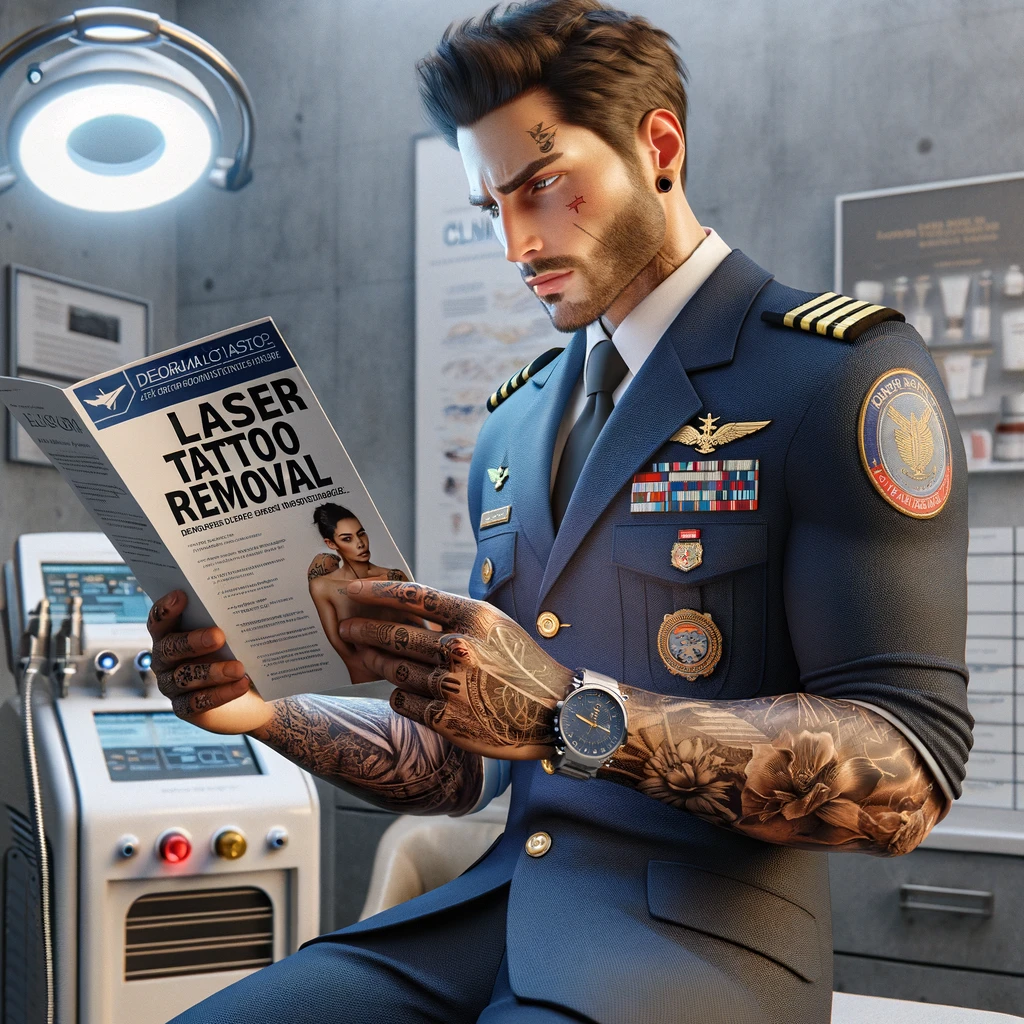
Considerations Before Tattoo Removal
- Professional Consultation: Consult specialists who are involved in tattoo removal. They also help you get the techniques that might help according to your tattoo type, size, color, and location.
- Cost and Commitment:
- Tattoo removal can be costly and take a long time for some people.
- It can take several months or even years to get completely removed.
- The cost usually depends on the size and design of the tattoo and the chosen removal method.
- Potential Risks: Know the risks, including the scars, discoloration, and incomplete removal. Balance these with your job aspirations and personal goals.
Embracing Change with Confidence
The choice to cover up, remove, or keep a tattoo is very personal; therefore, the process is more likely to be complicated for someone interested in their body art and an aviation career. The industry’s progress will likely lead to a more tolerant attitude towards body art. Therefore, pilots can now use their identities with or without a professional canvas.
The Future of Tattoos in Aviation: Generation Z Approach
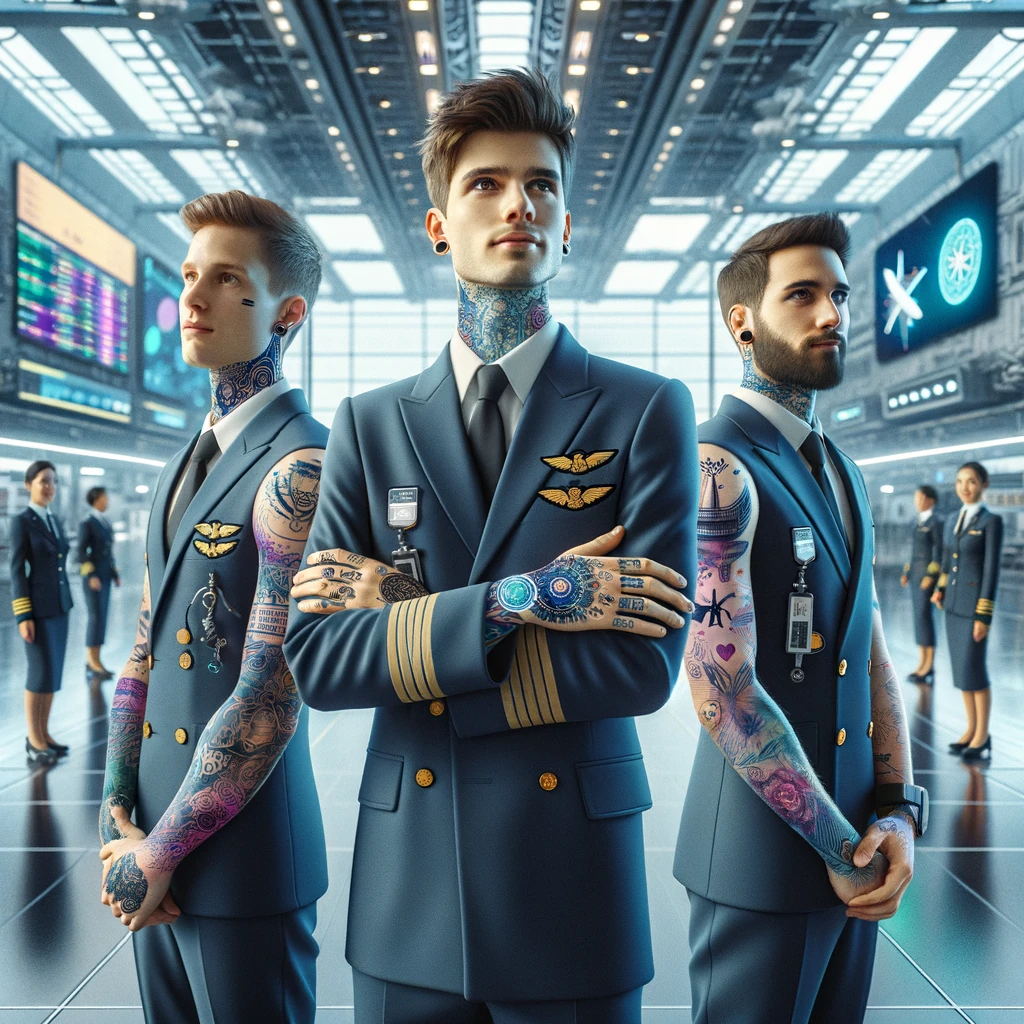
Going with the changing perspectives, the Aviation industry will also need to follow up with it.
Changing Attitudes
- Generational Shift: An inflow of new young pilots hired into the aeronautics industry undermines their focus on changing tattoo policies.
- Increased Acceptance: As a result, most air companies already softened their demands related to body art, followed by the tolerance transition happening in society.
Technological Solutions
- Concealment Products: Advantice in makeup and cover-up allows Pilots to avoid the temporary breakdown of dress codes. This buys the time until the policy can be revised and become a policy with a broader inclusiveness.
Ongoing Dialogue
- Policy Evolution: Communicative efforts to balance needs between airlines, regulatory bodies, pilots, and the overall respect hereof as individuals can create a more reasonable system for general impressions.
Core Values Remain
- Safety and Professionalism: We prioritize the safety and health standards following the adjustment in tattoo policies, which serve the same purpose.
Towards Inclusivity
- A More Diverse Industry: The act of acknowledging tattooing reflects more than mere acceptance of diversity and multiculturalism culture in the aviation industry.
Key Takeaway
- Tattoos on the rise is a global trend that is also materializing in the aviation industry, Still, it brings along a baggage of challenges. Yet, the gradual acceptance and embrace of that among the pilots is optimistic.
Some Commonly Asked Questions About Prohibited Queries about Pilots:
Can pilots have tattoos?
There are no problems with pilots’ tattoos once they are hidden when in uniform. Our goal is to keep in line with airline standards in appearance, which is considered professional.
Are commercial pilots allowed to have any tattoos?
Like their commercial counterparts, airline pilots may have tattoos if they cannot be seen in a pilot’s uniform, preventing tattoos from appearing on the face, neck, or hands.
What is so wrong with pilots displaying visible tattoos?
This rule strives to maintain the level of professionalism that suits the airline’s image and its client’s expectations by maintaining uniformity and neutrality when it comes to appearance.
What are Twenty-One Pilot tattoos?
Twenty-One Pilots is famous for tattoos that have meaning and draw fans to the concept of personal beliefs and music. They wear primarily visible ones, like neck tattoos with significant individual and band-related symbolism.
Why are pilot wings tattoos famous?
Yes, tattooing pilot wings is a reasonably common thing among pilots, duplicating the symbols on their uniform – aviator wings – in different designs.
Can pilots have some facial hair, mustache, or a beard?
Although the regulations evolved, permitting neatly trimmed goatees and mustaches, the most crucial element is that the hair should not impair the fit and seal of safety stuff like oxygen masks.
Why beards might be restricted for airline pilots?
The critical factor regarding beards is their possibility of affecting oxygen mask efficiency; the policy about facial hair differs among airlines, and it is according to their safety and professional appearance.
Which airlines do not include beard length in their guidelines for pilots?
Most airlines may have policies that allow neatly kept beards under specific conditions. In contrast, others may follow increasingly tighter no-beard policies, which shows the variety of standpoints on the pilots’ appearance.
Are you allowed to have tattoos since you are a pilot?
Pilots can have a tattoo. However, the position used matters, with the preference to be uncovered as little as possible.
What items pilot couldn’t carry during the flight?
The crew has to follow the strictest rules regarding bringing personal belongings into the cockpit (like forbidden personal gadgets, alcoholic drinks, and any substance that could influence his ability to fly safely). The attention is on safe barriers against distractions and loss of effectiveness.
Why is it against the regulations to take your personal belongings into the cockpit?
Restricting assorted items, such as some electronics, or any other substances, is for the safety of the pilot & passengers, as they can cause distractions from his duty of flying and increase flight risks.
Can pilots bring their medication on a flight?
Pilots can only carry personal meds, but using them needs to be regulated when they could hinder or affect focus and motor coordination. Pilots should be aware of aviation regulations and how these may negatively impact their performance.
Are smartwatches and wearable tech devices can be utilized by pilots during flight?
Smartwatches and wearable gadgets owned by pilots during duty may be limited by airline policies and aviation authorities’ regulations concentrating on non-distraction as operations’ guiding principle. They must in no way affect the smooth run of the aircraft.
Pilots Must Understand Aviation Regulations:
Being a pilot is primarily about combining one’s feelings of flight with unwavering dedication to aviation and procedure. This uniform remains the abstract medium of communication. It’s the relationship without being muted. It’s what every passenger onboard is part of.
- Cultivating Trust: All that eye contact and every detail of the pilot’s appearance either builds or destroys passenger trust. The pilot’s image is a powerful instrument underpinning the fact that they can only be in the safest hands after the plane doors are closed.
- A Continuous Commitment: Maintaining such standards does not take an hour or a single commitment but rather a continuous pursuit of perfection and acknowledgment of flying as a professional.
Professionalism and Appearance in Aviation: A Precise Guide for Aspiring Pilots
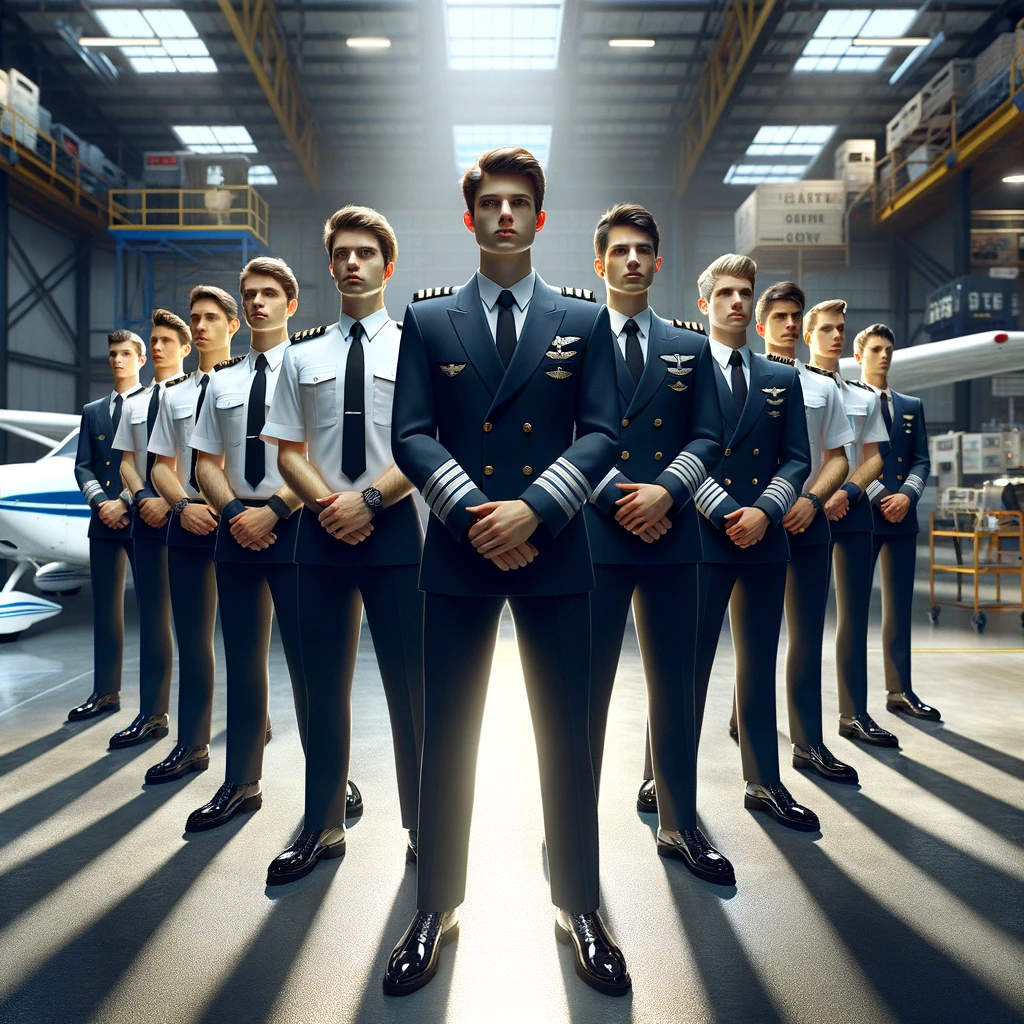
The pilot’s performance is obligated to keep the passengers secure and personify the airline’s values with their manner and look. This responsibility spans from the cockpit to each aspect that concerns a pilot’s outlook, including uniform requirements and grooming standards.
Uniform and Dress Code: The Heart and Soul of Pilots
A pilot’s uniform is not only apparel but also a sign of the power given to him, the trust he is entrusted with, and the responsibility he carries. It means the intensive training, holding of dedication, and commitment to safety that pilots put forward. Airlines impose specific dress codes to maintain the image of their company.
- Uniform Standards: Part of a set of rules and regulations regarding the uniform’s choice of colors, styles, and accessories as defined by the airline. On the other hand, this gives rise to consistency and acting in a manner that the whole team is recognized as professional.
- Condition and Maintenance: The uniform must always be spotless, starch-pressed, and in excellent shape, conveying the pilot’s meticulousness and commitment to upholding standards of discipline.
- Tattoo Coverage: Uniforms would also need to conceal the tattoos; otherwise, the concealer or makeup has to be used to maintain the standards of professionalism in the airlines.
- Accessories and Jewelry: These need to be simple, according to the same principles of the airline and those that focus on the pilot’s professional image.
Crew’s Appearance: Reflection of their Airline values
How the flight crew presents themselves exceeds their uniform; hence, passengers begin when buying tickets to the airline’s reputation. Key aspects include:
- Grooming: Hair should be neat and conservative, away from rebellious and attention-grabbing hairstyles. The main focus should be keeping the professional image. Beards and facial hair require cleanliness and neatness, thus resulting in a tidy look.
- Makeup: The purpose of applying makeup is thus to bring out natural beauty instead of having it completely replaced by makeup. Actual melodrama should be substituted with an element of tact and respectability.
- General Cleanliness: An aviation personnel’s whole look should be neat and well-attended to exhibit diligence and adherence to heightened aviation standards.
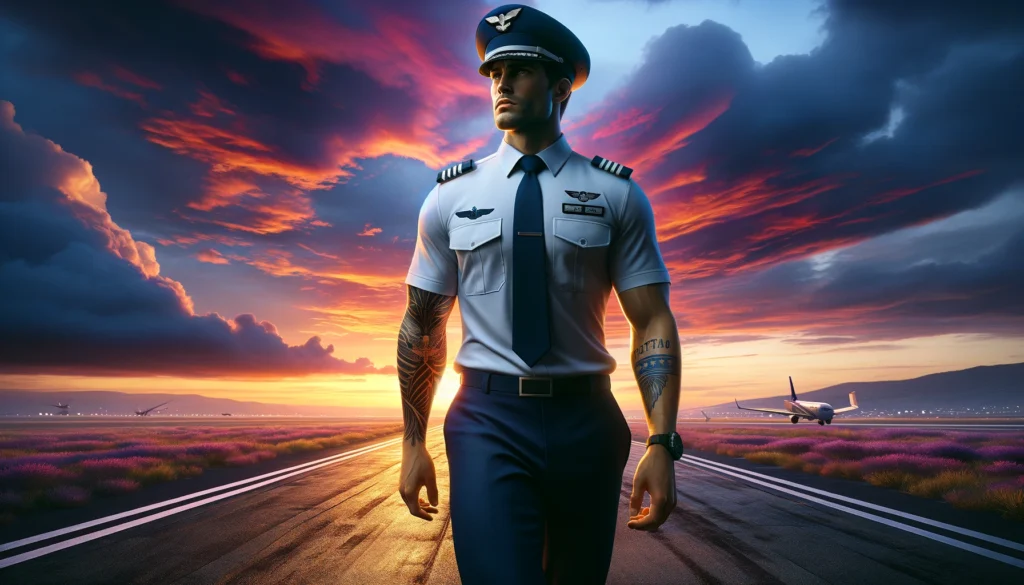
In general, although pilots have some freedom in adorning their skin with tattoos and growing beards, they are still bound by norms to achieve safe flights, professionalism, and undivided attention during flight operations. Moreover, the rules are rigorous concerning items that can be taken into the cockpit, which leads to the assumption that all the stakeholders in the aviation industry take safety matters very seriously.

